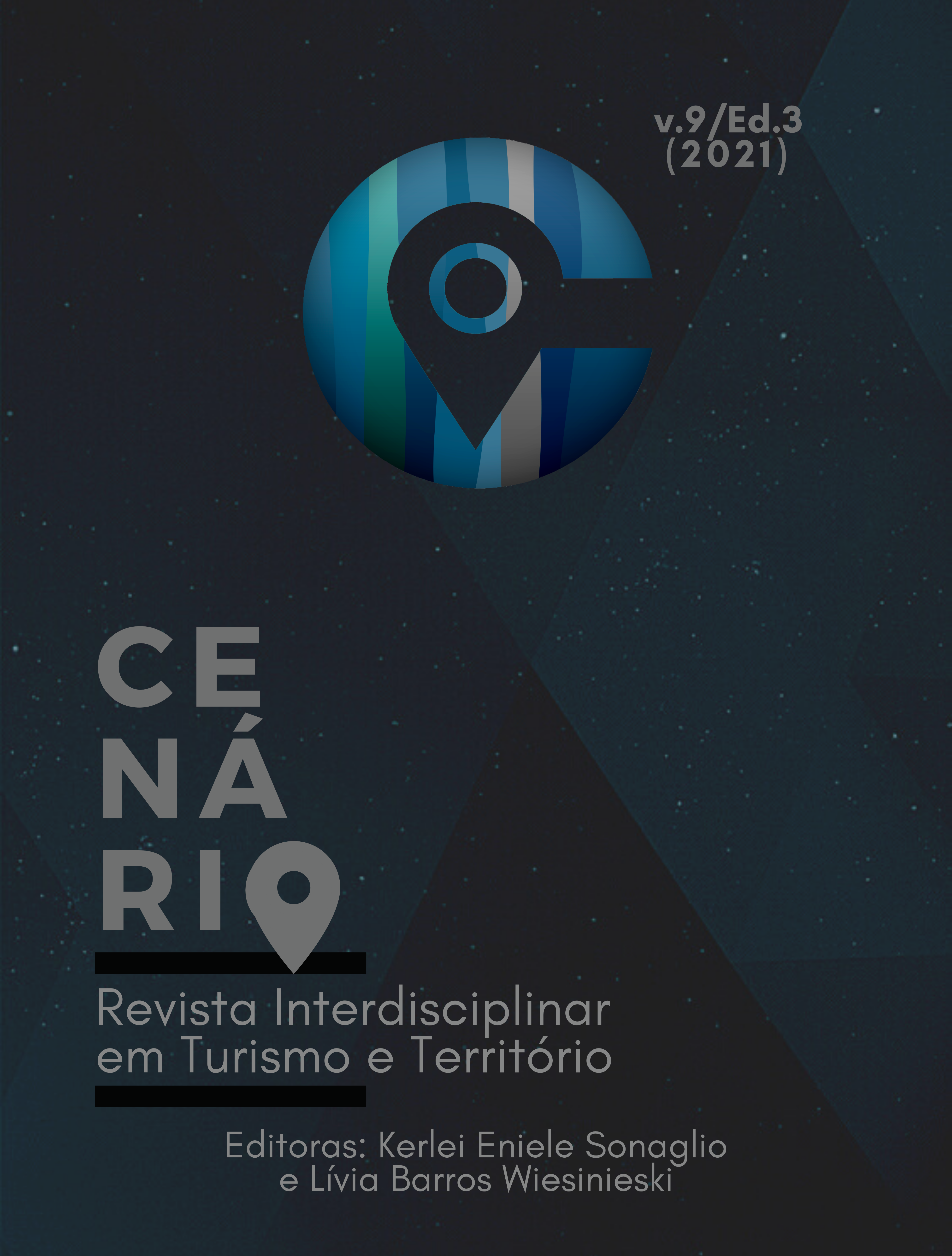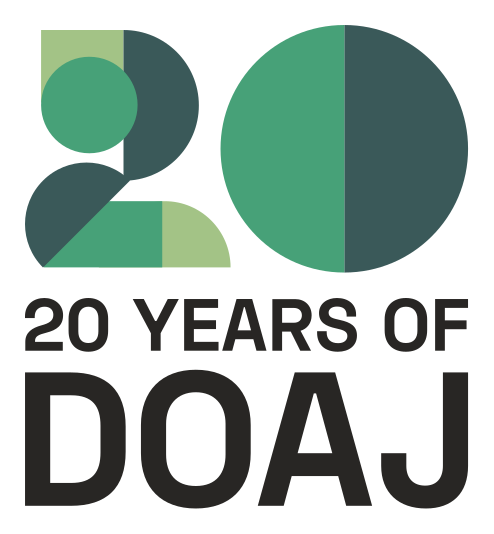Determinants of international tourist loyalty in Brazil
Determinantes de la lealtad turística internacional en Brasil
DOI:
https://doi.org/10.26512/revistacenario.v9i3.37625Keywords:
Fidelização; Destinos turísticos; Motivação; Satisfação; Modelagem estatística.Abstract
The loyalty of tourist destinations is of strategic importance both for business decision making and for the formulation of public policies regarding their competitiveness. Through an empirical study with data from the Ministry of Tourism's receptive tourism survey in 2013, the article evaluated the variables that determine the loyalty of international tourists in Brazil. The intention to return to the country and the number of visits to Brazil made by foreign tourists were treated as variables related to loyalty, with the application of statistical techniques, logistic regression and simple linear regression, respectively. It was observed that the variables related to motivation and satisfaction of the tourist explain the behavior of loyalty, which reinforces the results found in other international studies that addressed the theme.
Downloads
References
Agyeiwaah, E., Otoo, F. E., Suntikul, W., & Huang, W. J. (2019). Understanding culinary tourist motivation, experience, satisfaction, and loyalty using a structural approach. Journal of Travel & Tourism Marketing, 36(3), 295-313.
Almeida-Santana, A., & Moreno-Gil, S. (2018). Understanding tourism loyalty: Horizontal vs. destination loyalty. Tourism Management, 65, 245-255.
Báez-Montenegro, A., & Devesa-Fernández, M. (2017). Motivation, satisfaction and loyalty in the case of a film festival: differences between local and non-local participants. Journal of Cultural Economics, 41(2), 173-195.
Butler, R. W. (1980). 1. The Concept of a Tourist Area Cycle of Evolution: Implications for Management of Resources Canadian Geographer / Le Géographe canadien, 24: 5-12. https://doi.org/10.1111/j.1541-0064.1980.tb00970.x
Chen, G., & Xiao, H. (2013). Motivations of repeat visits: A longitudinal study in Xiamen, China. Journal of Travel & Tourism Marketing, 30(4), 350-364.
Chi, C. G. Q., & Qu, H. (2008). Examining the structural relationships of destination image, tourist satisfaction and destination loyalty: An integrated approach. Tourism management, 29(4), 624-636.
Correia, A., Serra, J., & Artal-Tur, A. (2017). Steady tourists’ relationship with a mature destination: The case of Portugal. Tourism Economics, 23(4), 803-815.
Cossío-Silva, F. J., Revilla-Camacho, M. Á., & Vega-Vázquez, M. (2019). The tourist loyalty index: A new indicator for measuring tourist destination loyalty?. Journal of Innovation & Knowledge, 4(2), 71-77.
Gyte, D. M., & Phelps, A. (1989). Patterns of destination repeat business: British tourists in Mallorca, Spain. Journal of Travel Research, 28(1), 24-28.
Kim, K. H., & Park, D. B. (2017). Relationships among perceived value, satisfaction, and loyalty: Community-based ecotourism in Korea. Journal of Travel & Tourism Marketing, 34(2), 171-191.
Lau, A. L., & McKercher, B. (2004). Exploration versus acquisition: A comparison of first-time and repeat visitors. Journal of travel research, 42(3), 279-285.
Ministério do Turismo. Caracterização e dimensionamento do turismo internacional no Brasil: 2009 – 2013. Brasília: Ministério do Turismo, 2017. Recuperado de: <http://www.dadosefatos.turismo.gov.br/2016-02-04-11-54-03/demanda-tur%C3%ADstica-internacional.html>.
Morettin, P. A., & Bussab, W. D. O. (2002). Estatística básica, editora saraiva. São Paulo, 6.
Niininen, O., & Riley, M. (2003). Towards the conceptualization of tourism destination loyalty. Tourism Analysis, 8(2), 243-246.
Oppermann, M. (1998). Destination threshold potential and the law of repeat visitation. Journal of travel research, 37(2), 131-137.
Oppermann, M. (2000). Tourism destination loyalty. Journal of travel research, 39(1), 78-84.
Ramseook-Munhurrun, P., Seebaluck, V. N., & Naidoo, P. (2015). Examining the structural relationships of destination image, perceived value, tourist satisfaction and loyalty: case of Mauritius. Procedia-Social and Behavioral Sciences, 175, 252-259.
San Martin, H., Collado, J., & Rodriguez del Bosque, I. (2013). An exploration of the effects of past experience and tourist involvement on destination loyalty formation. Current Issues in Tourism, 16(4), 327-342.
Santos, G. E. O. (2017). Diversidade de impactos econômicos da Copa do Mundo FIFA de 2014 no Brasil. CULTUR: Revista de Cultura e Turismo, 11(1), 202-219.
Schiffman, L. G., & Kanuk, L. L. (2009). Consumer behavior. Harlow, England: Prentice Hall.
Schmidhauser, H. (1977). Travel Experience Segmentation as a Predictor of Holiday Behaviour. In ESOMAR Travel and Tourism Seminar, Stresa.
Shavanddasht, M., & Allan, M. (2019). First-time versus repeat tourists: level of satisfaction, emotional involvement, and loyalty at hot spring. Anatolia, 30(1), 61-74.
Tanford, S., & Jung, S. (2017). Festival attributes and perceptions: A meta-analysis of relationships with satisfaction and loyalty. Tourism Management, 61, 209-220.
Urry, J. (1996). olhar do turista, O. Studio Nobel.
Veal, A. J. (2011). Metodologia de pesquisa em lazer e turismo. São Paulo: Aleph, 29.
Weaver, D. B., & Lawton, L. J. (2011). Visitor loyalty at a private South Carolina protected area. Journal of Travel Research, 50(3), 335-346.
Wen, J., & Huang, S. (2019). The effects of push and pull travel motivations, personal values, and destination familiarity on tourist loyalty: A study of Chinese cigar tourists to Cuba. Asia Pacific Journal of Tourism Research, 24(8), 805-821.
Woodside, A. G., & MacDonald, R. (1994). General system framework of customer choice processes of tourism services. Spoilt for choice, 30.
Wu, C. W. (2016). Destination loyalty modeling of the global tourism. Journal of Business Research, 69(6), 2213-2219.
Yoon, Y., & Uysal, M. (2005). An examination of the effects of motivation and satisfaction on destination loyalty: a structural model. Tourism management, 26(1), 45-56.
Downloads
Published
How to Cite
Issue
Section
License
Copyright (c) 2021 Cenário: Revista Interdisciplinar em Turismo e Território

This work is licensed under a Creative Commons Attribution-NonCommercial-NoDerivatives 4.0 International License.
1. Proposta de Política para Periódicos de Acesso Livre
Autores que publicam nesta revista concordam com os seguintes termos:
Autores mantém os direitos autorais e concedem a revista o direito de primeira publicação, sendo o trabalho simultaneamente licenciado sob a Creative Commons Attribution License o que permite o compartilhamento do trabalho com reconhecimento da autoria do trabalho e publicação inicial nesta revista.
A contribuição é original e inédita, e não está sendo avaliada para publicação por outra revista.
Autores cedem os direitos de autor do trabalho que ora apresentam a apreciação do Conselho Editorial da Revista Cenário, que poderá veicular o artigo na Revista Cenário e em bases de dados públicas e privadas, no Brasil e no exterior.
Autores declaram que são integralmente responsáveis pela totalidade do conteúdo da contribuição que ora submetem ao Conselho Editorial da Revista Cenário.
Autores declaram que não há conflito de interesse que possa interferir na imparcialidade dos trabalhos científico apresentados ao Conselho Editorial da Revista Cenário.
Autores têm autorização para assumir contratos adicionais separadamente, para distribuição não-exclusiva da versão do trabalho publicada nesta revista (ex.: publicar em repositório institucional ou como capítulo de livro), com reconhecimento de autoria e publicação inicial nesta revista.
Autores têm permissão e são estimulados a publicar e distribuir seu trabalho online (ex.: em repositórios institucionais ou na sua página pessoal) a qualquer ponto antes ou durante o processo editorial, já que isso pode gerar alterações produtivas, bem como aumentar o impacto e a citação do trabalho publicado.











